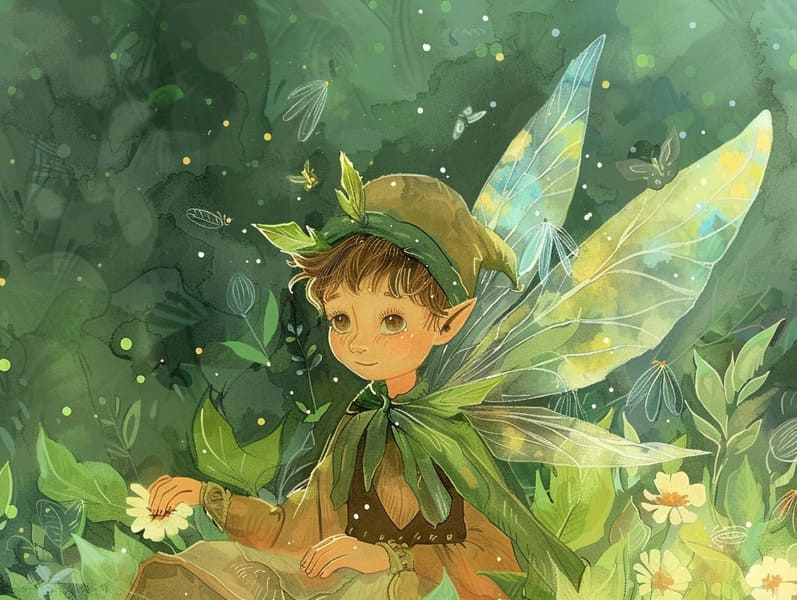The Start of Children's Fairy Tales with Their Unwavering Fascination.
The Start of Children's Fairy Tales with Their Unwavering Fascination.
Blog Article

Legendary fairy tales have historical significance. These stories have been told from one generation to the next centuries before they were ever transcribed. They emerged from a variety of traditions, including Western traditions. They were initially conveyed among grown-ups, often carrying themes and messages related to the societal norms and beliefs of the time.
The renowned Brothers Grimm, the two Grimm brothers, were among the first to compile and publish many of these beloved narratives. Their published works, "Grimm's Story Collection," included classics like "Ashenputtel," "The Bread Crumb Trail," and "Snow-White and Rose-Red," which have since become essentials in the world of traditional fairy tales. Similarly, the Danish author's magical fairy tales, such as "The Mermaid," and "The Little Duckling," have gained the love worldwide, solidifying their place in the pantheon of beloved fairy tales.
Despite their historical roots, these stories remain as pertinent as ever, especially as bedtime stories for kids. These charming stories are now available in various formats, including richly illustrated books, magical animations, and internet fairy tales.
Their continued relevance can be attributed to several delightful features:
Moral Lessons: Timeless fairy tales often illustrate important moral lessons. Fairy tales like "The Boy Who Cried Wolf" teach the merit of truth, while "The Tortoise and the Hare" highlight the qualities of steadfastness and unassuming nature. These stories offer kids clear distinctions between good and bad, developing their moral compass in a gentle yet significant way.
Kindness and Comprehension: Ancient fairy tales frequently present figures facing challenges and problems, encouraging young listeners to resonate with their struggles and rally behind their triumphs. For instance, "Beauty's Beast" emphasizes the virtue of valuing inner qualities to understand the true essence of a individual, encouraging sympathy and recognition.
Cultural Awareness: Many traditional fairy tales are interwoven with the cultural contexts from which they grew. Engaging with these fairy tales can provide illuminating insights into different traditions, advancing a sense of world insight and knowledge.
Imagination and Innovation: The fantasy-filled elements in timeless fairy tales—talking animals—motivate children’s imaginative ideas. These narratives take readers to fantasy realms, boosting creative thinking and a sense of excitement that stays a lifetime.
Old fairy tales are not only charming but also informative. They serve as enchanted tools in enhancing various cognitive and affective skills in young readers. When classic fairy tales are recited, they boost language proficiency by introducing new lexicon and sophisticated sentence structures. This practice also advances listening abilities and attention span, as little ones track the narrative, enthusiastic to see what happens next.
Furthermore, reflecting on the themes and characters of ancient fairy tales can enhance intellectual skills and cognitive skills. Young readers are shown to discern patterns, foresee events, and catch on to cause and effect. These analyses also aid little ones communicate their thoughts and feelings, cultivating their emotional intelligence.
In today’s high-tech era, the availability of digital fairy tales has made these tales more accessible than ever. Internet resources and digital apps make available wide arrays of traditional fairy tales that can be accessed or listened through anytime, anywhere. Fairy tales voiced are particularly common, giving an immersive method for little ones to appreciate these fascinating tales. Narrated books and read-out-loud videos lead characters and settings to life, often paired with enchanting background sounds and soundtracks that enrich the tale-telling adventure.
The timeless charm of timeless fairy tales lies in their ability to evolve to changing times while maintaining their underlying messages. Contemporary updates of these fairy tales often integrate more multicultural characters and modern settings, making them accessible to today’s audience. However, the central morals of heroism, goodness, and fairness remain unchanged, continuing to appeal to kids of all ages.
Old fairy tales also offer a sense of security and recognition. They extend a neat narrative with a apparent beginning, middle, and end, often wrapping up with the wrap-up of conflicts and the triumph of good over evil. This constancy can be encouraging for children, showcasing a sense of constancy in an fluctuating world.
Old fairy tales continue to charm and inform new generations, maintaining their spell and meaningfulness in modern society. As nighttime stories for kids, they render accessible a perfect blend of delight and instruction, nourishing moral values, empathy, and creativity. The availability of online storybooks and the prevalence of fairy tales voiced guarantee that these old fairy tales remain attainable to new generations.
By perpetuating and relating these tales, we continue to honor the rich tapestry of cultural heritage and cultural heritage. Whether you are viewing a richly illustrated book, seeing a internet library, or hearing an spoken story, the attraction of bedtime fairy tales is always within reach. These fairy tales remind us of the continued ability of stories and its ability to join us across epochs and places.
If you are perusing a artistically illustrated book, discovering a cyber collection, or listening on an read-aloud story, the grace of Grimm's fairy tales is always within reach.
These fairy tales emphasize of the continued influence of storytelling and its ability to bind us across eras and regions, classic fairy tales establishing a link that enchants and educates alike.